#Haim G. Ginott
Text
"I have come to the frightening conclusion that I am the decisive element. It is my personal approach that creates the climate. It is my daily mood that makes the weather. I possess tremendous power to make life miserable or joyous. I can be a tool of torture or an instrument of inspiration, I can humiliate or humor, hurt or heal. In all situations, it is my response that decides whether a crisis is escalated or de-escalated, and a person is humanized or de-humanized. If we treat people as they are, we make them worse. If we treat people as they ought to be, we help them become what they are capable of becoming."
Haim G. Ginott
0 notes
Text
I have come to the frightening conclusion that I am the decisive element. It is my personal approach that creates the climate. It is my daily mood that makes the weather. I possess tremendous power to make life miserable or joyous. I can be a tool of torture or an instrument of inspiration, I can humiliate or humor, hurt or heal. In all situations, it is my response that decides whether a crisis is escalated or de-escalated, and a person is humanized or de-humanized.
If we treat people as they are, we make them worse. If we treat people as they ought to be, we help them become what they are capable of becoming.
— Haim G. Ginott
71 notes
·
View notes
Text

“I have come to the frightening conclusion that I am the decisive element. It is my personal approach that creates the climate. It is my daily mood that makes the weather. I possess tremendous power to make life miserable or joyous. I can be a tool of torture or an instrument of inspiration, I can humiliate or humor, hurt or heal. In all situations, it is my response that decides whether a crisis is escalated or de-escalated, and a person is humanized or de-humanized."
~Haim G. Ginott
(Art by 'RiverLotusMoon')
#RiverLotusMoon
5 notes
·
View notes
Text

Philo Thoughts
I have come to the frightening conclusion that I am the decisive element. It is my personal approach that creates the climate. It is my daily mood that makes the weather. I possess tremendous power to make life miserable or joyous. I can be a tool of torture or an instrument of inspiration, I can humiliate or humor, hurt or heal. In all situations, it is my response that decides whether a crisis is escalated or de-escalated, and a person is humanized or de-humanized.
If we treat people as they are, we make them worse. If we treat people as they ought to be, we help them become what they are capable of becoming. ~Haim G. Ginott
(Book: Teacher and Child: A Book for Parents and Teachers)
(Art: Photograph of actress Jean Seberg by Jack Garofalo)
6 notes
·
View notes
Text
🎂 Azi îl celebrăm pe Haim G. Ginott.
Cartea autorului, „Între părinte și copil“, are astăzi preț special, cu 25% reducere față de prețul afișat.
#ZiuaAutorului #HaimGinott
0 notes
Text
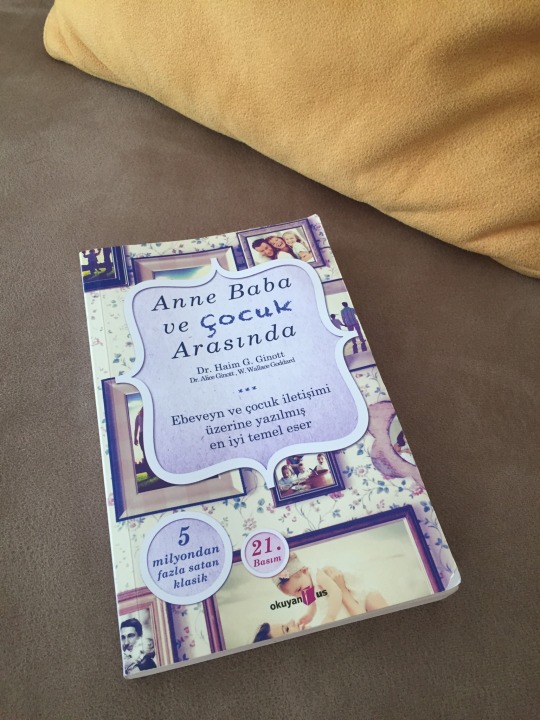
Anne Baba ve Çocuk Arasında
Ebeveynlik kitapları arasında en faydalı bulduğum kitap bu oldu.
Kitap, gündelik ve alışılmış tepkilerimizin farkına varıp bunların yerine koyabileceğimiz alternatif diyaloglarla dolu. Hayata geçirilmesi için çokça tekrar edilmesi gerek çünkü ezbere bildiğimiz ebeveynlik algımızı yıkmak kolay olmayacak.
Bazı yerlerde gerçek dışı diyalogların olduğunu da düşünmedim diyemem mesela siz ona şöyle cevap verirseniz çocuk da size böyle bir cevap verecektir gibi konuşmalarda çocuk muhtemelen kendisini yerlere atacaktır ama yine de siz bilirsiniz dedirtiyor. Tabi denemeden bilemeyiz.
Ayrıca kitabın sonunda psikologlar çocuklarına nasıl davranıyor kısmında çocuk terapistlerinin “annem bana nasıl davranıyorsa çocuğuma öyle davranıyorum sanki bir senaryoyu tekrar edip duruyorum” demesi veya “terapideki bir çocuk yere boya döktüğünde ona nasıl tepki vermem gerektiğini biliyorum ama kendi çocuğum aynı şeyi yaptığında öfkelenmek ve onu utandırmaktan kaçınmıyorum” şeklindeki itirafları inanılmaz rahatlatıcı geldi bana. Demek ki ebeveynlik gerçekten öğrenilmesi değiştirilmesi ve geliştirilmesi gereken bir alan. Bu farkındalıktan öte her akşam oturup nerede hata yaptım bu tepki yerine nasıl tepki vermeliydim ne söylemeliydim nasıl davranmalıydım diye çalışmayı gerektiriyor.
Peki bu açıdan baktığımızda ebevenlik de bir öğrencilik biçimidir diyebilir miyiz?
#anne baba ve çocuk arasında#haim g ginott#kitap#terapi#psikoloji#ebeveynle çocuk iletişimi#kitap tavsiye#ebeveynlik kitapları#çocuk terapisi
5 notes
·
View notes
Text
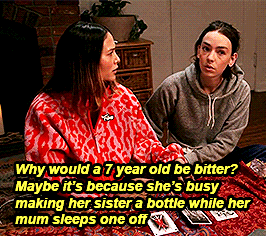
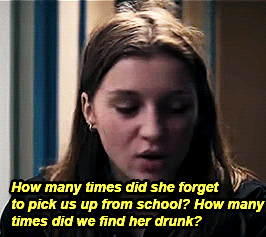

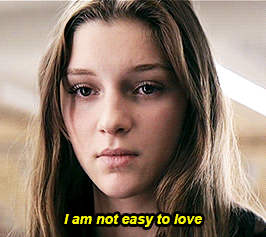
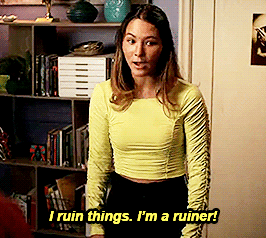

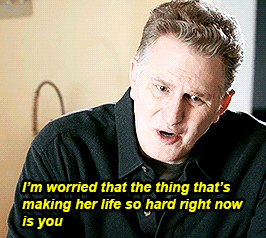



"As a teacher, I possess a tremendous power to make a child's life miserable or joyous. I can be a tool of torture or an instrument of inspiration. I can humiliate or heal. In all situations, it is my response that decides whether a crisis will be escalated or de-esculated and a child humanised or dehumanised - Haim G. Ginott
#I did choose violence with this gifset#listen if you give me a kiddo who is full of light and love and all they want is to be loved in return#and the adults in their life turn their backs on them and make them feel like they are nothing#I will be drawing up the adoption papers right away!#if you even look and lola or izzie wrong I'm coming for yoh#skam france#skamfr#lola lecomte#cazzie#izzie taylor#atypical spoilers#atypical
394 notes
·
View notes
Text
A adolescência é a idade dos anseios cósmicos e das paixões privadas, de preocupações sociais e agonias pessoais. É a idade da inconsistência e da ambivalência.
Haim G. Ginott (1922-1973)
7 notes
·
View notes
Text
Some Goldie Oldies are Golden
Some Goldie Oldies are Golden
My recent post on memories of grad school brought me to my bookshelf today and left me wondering how it is that solid truths can be forgotten or overlooked or ignored. I became a new parent in 1963 and by 1965 I needed help with the parenting enterprise. I found Dr. Haim G. Ginott’s Between Parent and Child hugely helpful. Although I’m far from perfect and didn’t utilize it as much as I wish I…
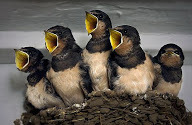
View On WordPress
1 note
·
View note
Text
부모와 아이 사이
일전에 다른 글에서 밝힌 적이 있다. 내가 이곳에 글을 쓰는 이유 가운데 그 어떤 것보다도 진지하게 생각하는 것에 관해서 말이다. 나는 내 아이에게 정신적 자산을 물려주고 싶다는 생각으로 여기에 꾸준히 글을 쓰고 있다.
사실 지금까지 걸어온 내 삶이 정신적 자산을 논할 만큼 대단하지는 않다. 사회적으로 높은 지위에 오른 것도 아니고 학문적으로 큰 업적을 이룬 것도 아니다. 그저 나는 아주 평범한 동네 의사다. 아침마다 진료실에 나와서 나를 믿고 찾아와주는 사람들의 목소리에 마음을 다해 귀를 기울여주는 것이 내가 매일같이 하는 일이다. 내가 배운 것으로 남에게 도움을 줄 수 있을 때마다 주워 담는 행복감을 연료 삼아 그렇게 하루하루를 살아간다.
하지만 이러한 평범함도 거저 주어지지는 않았다. 세상 사람…
View On WordPress
0 notes
Text
Bambini e media come comportarsi?
Bambini e media come comportarsi?
Bambini e media come comportarsi?
I bambini sono come il cemento umido, tutto quello che li colpisce lascia un’impronta.
Haim G. Ginott
Tweet
#Bambini #Media #Educazione #Digitale#Follow #PixClick
È abbastanza educativo ciò che guardano i bambini in televisione?
Facciamo davvero attenzione a ciò che guardano i bambini in televisione? A ciò che…
View On WordPress
2 notes
·
View notes
Text
“I am a survivor of a concentration camp. My eyes saw what no person should witness. Gas chambers built by learned engineers. Children poisoned by educated physicians. Infants killed by trained nurses. Women and babies shot and burned by high school and college graduates. So I am suspicious of education. My request is: help your students become more human. Your efforts must never produce learned monsters, skilled psychopaths, or educated Eichmanns. Reading, writing, and arithmetic are important only if they serve to make our children more human.”
— Haim G. Ginott
1 note
·
View note
Text
"I bambini sono come il cemento umido, tutto quello che li colpisce lascia un’impronta."
Haim G. Ginott
74 notes
·
View notes
Text

Philo Thoughts
I have come to the frightening conclusion that I am the decisive element. It is my personal approach that creates the climate. It is my daily mood that makes the weather. I possess tremendous power to make life miserable or joyous. I can be a tool of torture or an instrument of inspiration, I can humiliate or humor, hurt or heal. In all situations, it is my response that decides whether a crisis is escalated or de-escalated, and a person is humanized or de-humanized.
If we treat people as they are, we make them worse. If we treat people as they ought to be, we help them become what they are capable of becoming. ~Haim G. Ginott
(Book: Teacher and Child: A Book for Parents and Teachers )
(Art: Painting by Kevin Foote)
1 note
·
View note
Text
When The Adults Change Everything Changes
Paul Dix
Seismic Shifts in School Behaviour

Key Notes & Quotes
A book that upends the debate on behaviour management in schools and offers effective strategies that serve to end the search for change in children and turn the focus back onto the adults.
Introduction
The support available to teachers who struggle with behaviour is woeful.
The unrelenting drive for exam results has blunted pastoral care in many schools.
The tide is turning on the behaviour debate. The ‘punishment brigade’ are losing. The appalling lack of respect for teachers is stirred by greedy politicians, ignorant inspectors and the ugly opinions of those who would sell out teachers before breakfast. for a slither of dirty self promotion.
in behaviour management, culture eats strategy for breakfast. Getting the culture right is pivotal. With the right culture the strategies that are used become less important. The culture is set by the way that the adults behave.
Chapter 1: Visible Consistency, Visible Kindness
Behaviour policy and practice should be simple, highly effective and utterly consistent.
Consistency is needed, however this should not be a restrictive consistency that limits flair and patronises poor communities, but a solid base on which to build authentic, exciting behaviour practice. It is a consistency routed in kindness, not, in the machismo of zero tolerance.
What works is consistency, not trying to tackle all behaviour at once but deciding which behaviours are to be taught. it is not relying on the parents to teach it, but by saying ‘You need these behaviours to be a successful learner in this school. We are not going to hide them. We are going to teach you them. We will teach the staff how to do it.’
The foundations of every school must be excellent behaviour. We should be keeping the focus on a visible culture of impeccable conduct, and making the consistency palable, audible and highly visible. Every single day. Smal, persistent and visible shifts in adult nehaviour have an incredible effect on children’s behaviour. The message is: don’t be distracted by temporary distractions; get behaviour right first. Innovative teaching and learning cannot be built on inconsistentA brilliant example of creating and maintaining behaviour practice.
The rule of three: three rules are easily remembered by all so that everyone uses them all the time.
The best schools have a behaviour plan that is based on tight agreements, simply framed and relentlessly pursued.
Example: Fantastic Walking
What are the visible consistencies in your setting?What could they be? Are they embedded with love or punishment?
Why crush behaviours with punishment when you can grow them with love? Visible consistency with visible kindness allows exceptional behaviour to flourish.
Haim Ginott quotation about the conduct of the individual teacher is startling accurate - ‘I have come to a frightening conclusion. I am the decisive element in the classroom.
Meeting and Greeting
A great example, that instantly highlights the lack of consistency in some, if not most, schools is the meet and greet. Dix points out that even this most basic routine is inconsistent - some teachers want pupils lined up at the door, some want learners standing behind chairs, some want equipment out, some want them in and working immediately.
Meet and greet all your learners with a handshake and a smile (a proper handshake, not a high five or fist pump). Mark the formal start to the lesson at the door.
Behaviour management is a team sport. It needs a team discipline, ehos and look.
The rush in intitial teacher training to collect strategies and comile uniquely individual set of tricks removes the focus from where it need to be: the team, agreed adult behaviour and common values.
Some Key Summaries...
The simpler the agreements, the tighter the consistency. Consistent agreements that are not written down are just wishes.
Don’t overcomplicate things by making an unworkable list of 15 odd daily consistencies - keep it simple. consise and easily memorable.
Make sure your class, department faculty, school or college has a set of three agreed visible consistencies. Challenge those who step away fromt he challenge immediately.
Don’t take your eye off the ball after you’ve successfully made a consistent shift and everyones focus shifts on to something else to the detrimet of the thing you have just changed.
Further Reading:
Teacher and child : a book for parents and teachers / Haim G. Ginott.
The author suggests concepts, attitudes and a language of acceptance and compassion to improve daily situations and psychological problems faced by teachers. He applies his ideas to problems of discipline, criticism, anger, motivation, homework, praise, cooperation, and the conflicting relationships of students, teachers, administrators and parents.
Chapter 2: The Counter Intuitive Classroom
If you really want to screw the system become successful - Jacqueline Lynch, Learning Advisor, Park Campus Academy
Great behaviour management is counter-intuitive. What seems to be the most obvious response to poor behaviour, what is instinctive, often makes the situation worse.
Humiliating children should shame them but for many it seems to fuel their fame and reputation. Hevay puncihsment may seem to crush behaviour in the short term, it may even remove the problem for the teacher temporarily, but it doesn’t teach improved behaviour to those who really need to learn it.
The key to managing your classroom is to know your counter-intuitives and refuse to be rawn by them.
An emotionally led response to bad behaviour shoud always be resisted.
How you behave is more important than how they behave.
When children behave badly give them what they don’t want: a cool, mechanical, emotionless response. Save your emotion, passion, enthusiasm and excitement for when it has most impact - when behaviour is over and above.
Children’s Names on Boards
Where is the research study showing that it is an effective way of managing behaviour? - clue, there isn’t one.
This method chiefly targets learners who always revel in the attention and adulation that challenging authority can bring - naming and faming, not naming and shaming.
In fact, it reconfirms their poor self-image, re-stamps a label of low expectation and provides a perverse incentive to the more subversive mind.
Behaviour Charts
Elaborate hierarchies for rewarding and punishment concocted using questionable metaphors and displayed for everyone to see.
None of these charts do anything other than reinforce labels and publicise poor behaviour.
Knowing How to Behave
Children need to be taught and retaught and retaught expected behaviours.
Your pupils will need to have behaviours recalled and retaught as contexts, curriculum and age change. The trouble is, too often these behaviours are not obvious, or not highlighted and not explicitly taught. Meaning kids end up playing a guessing game of expectations.
Heavy punishment
Usually disproportionate to the crime.
burying children in punishment builds a deep resentment. For the child it often creates a permenant breach of trust.
More ferocious punishment does not result in better behaviour. It simply drives resentment underground and divides the adults and children into ‘them’ and ‘us’. What works is the immediacy of response, not the weight of the sanction.
Recognition Boards

A recognition board is the simplest way to shift the culture in your classroom.
It is a collaborative strategy: we are one team, focused on one learning behaviour and moving in one direction.
The recognition board fosters a positive interdependence on the classroom, but there is no prize, no material reward. At the end of the lesson/day/session the aim is for everyone to have their name on the board.
Untangle the behaviour in your clzssroom by keeping the positive and negative consequences separate.If a learner has achieved the set focus to attain a a place ont he recognition board, we do not then remove them for bad behaviour.
The kind of approach to behaviour schools take, where good and bad behaviour are tallied against one another is not a reflection of how behaviour works in the real world and society, it distorts the child’s moral compass.
Nine ways to use the recognition board:
Target your recognition board at learning attitudes, not just functional behaviours. Make sure that the behaviour you choose raises the expectation for the children and is not simply something they can already do well.
Names or tallies go on the board to recognise pupils who are demonstrating the desired learning attitude.
Names or tallies are never removed from the board. Learners who disruot are dealt with privately. Once a name is on the recognition board for good conduct it cannot come off for poor conduct. A different repsonse should be given.
Learners can nominate others to be put on the board. Try stopping an activity after 15 minutes and asking them to write up four names of other children who have been consistently demonstrating the desired behaviour. Use it for reflection at the end of lessons.
Emphasise peer responsibility. It is not a competitive between individuals, rather a whole class helping everyone to get their name on the board.
Recognition boards need to be refreshed hourly, daily or weekly depending on the gae of the children and context in which you are working.
Pupils are recognised for effort, not for achievement. Your recognition board should for everyone. Your highest achievers might always be high achievers. They only get on the board when they have shown the required effort.
When everyone has their name on the board a collective ‘whoop’ is appropriate; large rewards are not necessary.
Use the recognition board to persistently and relentlessly catch learners demonstrating the right behaviours.
Token Economies Are Corrupt
Token economies, where a credit or metric system is used to reward individuals, can never be consistent. It always rewards the highest achievers or the worst behaved - the most ‘visible’ children - and it is open to abuse by adults and children alike.
With the best of intention, teachers end up devaluing the currency, usually within the first week.
Seven Counter-intuitives to Practice
Respond to poor behaviour with deliberate calm.
Correct all poor behaviour in private.
Flip names on the board to recognition board and never go back.
Throw out your token economy.
Focus on the immediacy of consequences rather than the weight of punishment.
Re-examine your tracking for individual pupils who are repeatedly disrupting. is their report card becoming a status symbol of celebrity?
Rmeove the beahviour games from your teaching and replace with positive recognition, importance and sense of belonging.
Some Key Summaries...
The concept that some individuals follow people first, then they follow the rules. you cannot expect or demand these individuals to come to your viewpoint, you have to go to where they are standing, understand where they are coming from and then guide them to where they need to be.
Don’t get caught up in the emotion of an incident and allow your intuitive response to override your rational response.
Don’t assume that anger can be crushed with threat of punishment.
Don;t adopt strategies from other teachers without question, what is the evidence that what you are being told will work for your classroom?
Be prepared to say nothing. Sometimes just sitting and waiting with an ‘I am ready when you are’ expression works
Chapter 3 - Deliberate Botheredness
Previously, respect was always expected, never given.
Unfortunately 30 years on the same attitude is still found in schools where the process of managing behaviour is detached from the needs of the child.
The most difficult behaviour can emerge from those with attachment issues at home, desperae for connection.
It is the small stuff, the daily acts of care, the perpetual generosity of spirit, the interest that you show in their lives that matters most - what we would call ‘botheredness’.
using positive recognition, or being bothered, means that you know how to make each child feel appreciated and important. this takes time, effort and commitment on your part. Some children find their sense of importance through fame: the work on display etc., others find their importance in a wuiet word, an extra responsibility or subtle, discreet reinforcement.
Being endlessly bothered is the key to sustaining and maintaining positive rapport with your students.
Children, like adults, want to feel important, valued and liek they belong. They crave it. If that appreciation is not given for positive behaviour then you invite it to be elicited through poor behaviour.
Over and Above
If you constantly reward minimum standards then children will strive for minimum standards. If you reward children for going over an dabove then there is no limit to their excellent behaviour.
Focusing on behaviour that is over and above creates an immediate shift in expectations. It gives the children something more than bare minmum to achieve, it gives them something to reach for. How you recognise these students who go over and above should lie at the heart of your behaviour practice.
Emotional Currency
A smiley face on a piece of work, a recommended book, or news article you cut out just because you knew they’d be interested - opportunities for building emotional currency are easy to find.
Done right, the drip effect of positive recognition beats grand material rewards that shine brightly but soon fade.
Positive Notes
On work, send to their teachers or form tutors, sent home, given directly etc.
Also, positive notes from visiitors and peers as a scheme of recognising good behaviour.
The issue is proportionate response. Balance is important.
Your disproportionate and over-zealous rewarding of children who are badly behaved by default has consequences for other children in terms of their view of the recognition and value of positive notes as a currency.
Positive notes to colleagues is also sometimes nice :)
Worksheet Weary
Worksheets are for the teachers not for the students.
If you know how to do it then a worksheet is redundant, if you don’t know how to do it then a worksheet won’t help.
Some Key Summaries...
Don’t try and be ‘down with the youth’ or take on ‘overbotherdness’ - its just weird.
Over and above - you need to make sure that ALL of your students are equally likely to receive recognition - think about those who are always quietly geting on.
Triangulate your botheredness with other colleagues so that it is reinforced.
Go to the netball game, or after school disco, turn up, be a part of outward bound expeditions. Your botheredness cannot be a performance that lives in the classroom and dies when the bell goes at the end of the day. students know the teachers who always show up, whose support for them is visible and who are there when others have disappeared.
Chapter 4 - Certainty in Adult Behaviour
Be kind, be humble, be nice.
Although teachers share many values, those that relate to behaviour can be tricky. They are wrapped up in the type of schools each teacher has worked in, their own experience of school as a child, their own experiences of parenting and their political beliefs.
In order to change these divisive core values we need to resseruct the idea that we are stronger and more consistent when we stand together, everyone compromising a little to make the message utterly clear for the children's nd all staff pursuing common values for the good of everybody.
the key to correcting behaviour with minimal effort - absolute certainty - the children know that they will be recognised for going over and above. They are as certain in it as they are that their poor behaviour will result in consequences.
It is certainty that is at the heart of all exceptional behaviour practitioners... certainty is powerful enough on its own... what they have honed is a certainty around their expectations for behaviour that are expected, respected and unquestioned.
0 notes
Photo

AUGURI NELLA GIORNATA INTERNAZIONALE DEL BAMBINO "I bambini sono come il cemento umido, tutto quello che li colpisce lascia un’impronta." (Haim G. Ginott) #bambinifuturodelmondo https://www.instagram.com/p/CA5fOtWDia5/?igshid=txtib93gmoj7
0 notes